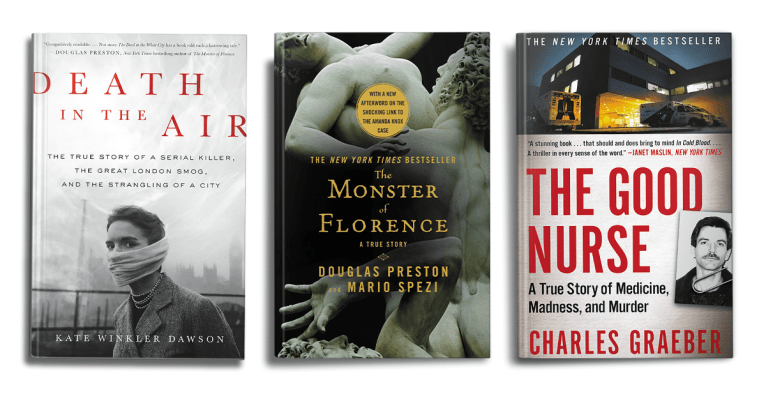Psychopaths and Where to Find Them
 The word psychopath gets bandied about a lot these days, especially by the unqualified (said the true crime podcasters). But are we using the term correctly? It has become so much a part of our lingua franca that a roommate leaving their dirty dishes in the sink overnight could earn themselves the title far too easily. Or, how many times have you dissected the behavior of your friend’s “psycho” ex? We’re all guilty of it, but as usual, most of us don’t know what the hell we’re talking about.
The word psychopath gets bandied about a lot these days, especially by the unqualified (said the true crime podcasters). But are we using the term correctly? It has become so much a part of our lingua franca that a roommate leaving their dirty dishes in the sink overnight could earn themselves the title far too easily. Or, how many times have you dissected the behavior of your friend’s “psycho” ex? We’re all guilty of it, but as usual, most of us don’t know what the hell we’re talking about.
Psychopathy is possibly the most well-known but least understood personality disorder out there, so let’s get into it . . .
We tend to use psychopathy and antisocial personality disorder (ASPD) interchangeably, but the best way to think about it is as psychopathy being a subset of ASPD. So what is antisocial personality disorder? ASPD is a Cluster B personality disorder, which means that it belongs to the erratic personality disorder family. Cluster B is also home to borderline personality disorder, histrionic personality disorder, and narcissistic personality disorder (more on these in chapters 5 and 6).
ASPD is a diagnosable condition, as it is listed in the American Psychiatric Association’s Diagnostic and Statistical Manual of Mental Disorders, Fifth Edition (DSM-5), and it is thought to affect about 3 percent of the general population and around 80 percent of incarcerated populations. There are seven criteria, three of which must be met for a diagnosis: violating social norms; deceitfulness; impulsivity; irritability; irresponsibility; manipulative; and lack of remorse.
Psychopathy, on the other hand, is not a mental disorder, and as such it can’t really be diagnosed. Psychopathy can be thought of as a construct, typified by a lack of empathy and callous behavior. And while ASPD is categorical (i.e., you have it or you don’t), psychopathy is generally considered to be on a spectrum.
And what about sociopathy? Another term we tend to mix into this confusing soup of disorders. Well, sociopaths are generally considered to be created through abuse and trauma, unlike the genetic psychopath, and while many of us confuse the two terms given some similar behaviors— such as a lack of empathy, dishonesty, and shallow emotions—they are two very different constructs. Not just in terms of how they are formed in a person, but also because the sociopath, unlike the psychopath, is actually highly emotional (when it comes to negative emotions like rage) and likely to be very reckless. The best way to differentiate the two is to think of a cold, calculated, in control psychopath versus a hot-headed, volatile, impulsive sociopath.
Now that we’ve cleared that up, let’s get back to psychopathy, and the specific traits that psychopaths display. Psychopaths are considered the most extreme citizens of the Antisocial Personality kingdom. They are usually charming, narcissistic, superficial, impulsive, callous, unemotional, and—like mean girls in high schools the world over—they have no problem throwing others under the bus to get what they want. Their only goal is the pursuit of pleasure, which, according to Lucy Foulkes in her study “Inverted Social Reward: Associations between Psychopathic Traits and Self Report and Experimental Measures of Social Reward,” can be gained by hurting others, engaging in antisocial behavior, and being coercive and nasty.
That being said, despite what the Bateses and Batemans of Hollywood want you to believe, psychopaths do have feelings. They can feel excited or even happy, although the stakes have to be much higher than they would for a “normal” person. Crucially, guilt, anxiety, empathy, and remorse do not make an appearance. According to Dr. Hare, a forerunner of the psychopathic research space, these “intraspecies predators” are not much fun to be around. Although they may understand the emotions of others, psychopaths don’t tend to feel bad about any harm they cause. A guilt-free life may sound great, especially to the fallen Catholics among us, but having a psychopathic brain is by no means a one-way ticket to easy street.
Excerpted from RedHanded: An Exploration of Criminals, Cannibals, Cults, and What Makes a Killer Tick by Suruthi Bala and Hannah Maguire with permission. Copyright © 2021. Available from Running Press, an imprint of Hachette Book Group, Inc.
Order The Book
How do we responsibly consume these kinds of stories as entertainment, and more importantly, what can we learn from them? RedHanded rejects the narrative of killers as monsters and that a victim "was in the wrong place at the wrong time," and instead tells the stories we want to hear in a way that challenges perceptions and asks the hard questions about society, gender, poverty, culture, and even our politics.
After meeting at a party in London where they both discovered they listened to the same murder podcasts, Hannah Maguire and Suruthi Bala drunkenly promised to one day start their own true crime podcast together and the rest is history. From the hosts of the hit true crime podcast RedHanded (dubbed by Rick & Morty creator Dan Harmon as the "best true crime podcast I've heard, ever"), Hannah Maguire and Suruthi Bala have amassed a cult following of "spooky bitches" amounting to an incredibly strong 63k downloads per episode and 728k backlist downloads every month in the US alone.
With candor, humor, interviews with experts, research on real-life cases, and an unflinching dissection of what makes a killer tick, Bala and Maguire take us through the societal, behavioral, and cultural phenomena that make victims—and their murderers—our collective responsibility and to find out once and for all: what makes a killer tick?
By clicking 'Sign Up,' I acknowledge that I have read and agree to Hachette Book Group’s Privacy Policy and Terms of Use
What to Read Next






